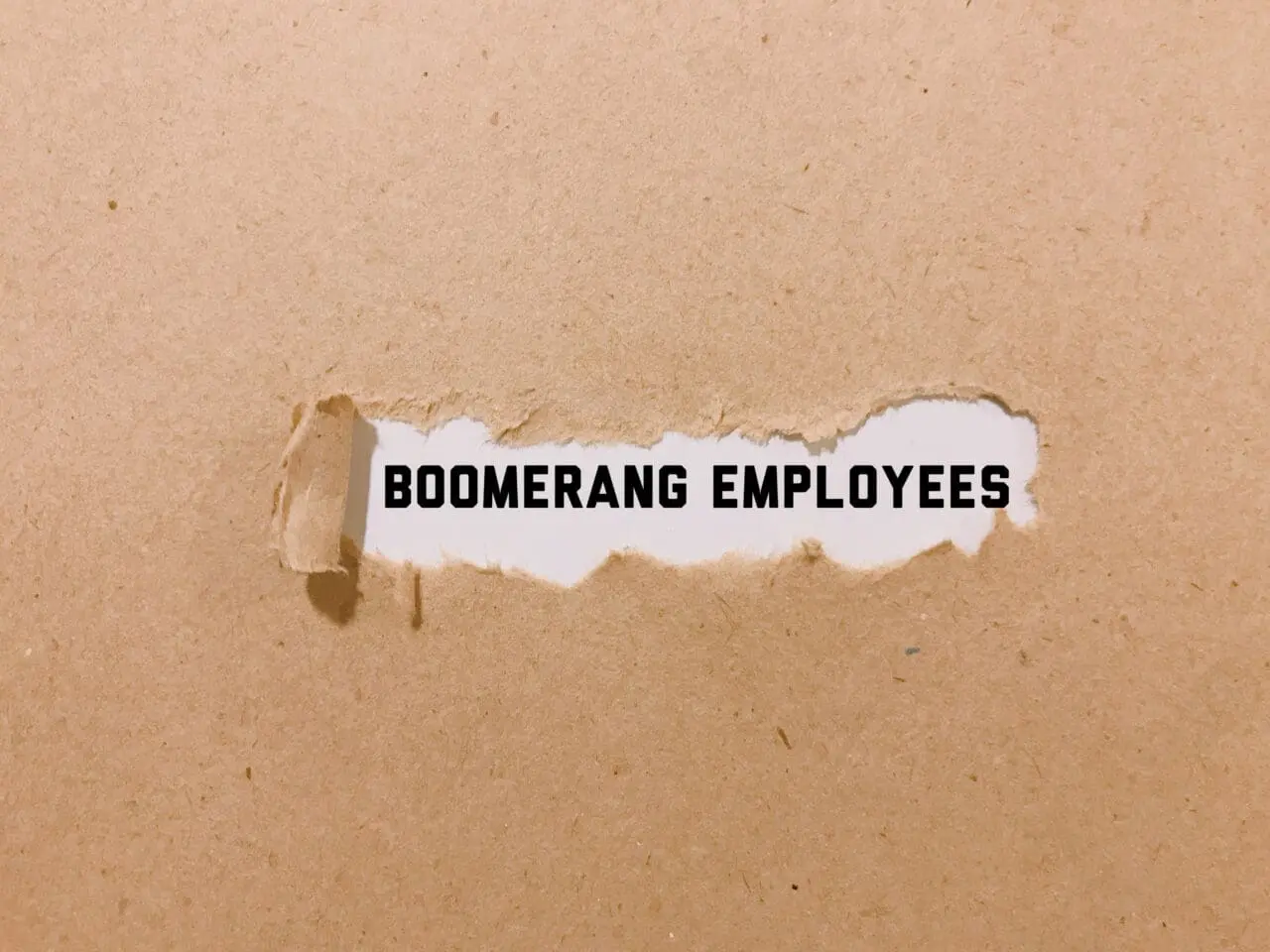

Job boomeranging refers to when an employee leaves a company and then returns to work for the same company at a later date.
The term ‘job boomeranging’ was coined by Anthony C. Klotz, Associate Professor of Management, Organisations and Innovation Group, at UCL School of Management in London. According to Anthony Klotz, boomeranging (returning to the same job after leaving) is happening because workers left their jobs in what he calls ‘The Great Resignation’ and then suffered ‘The Big Regret’. It’s no secret that hiring and training new employees can be a time-consuming and costly process. That’s where ‘job boomeranging’, or the practice of rehiring former employees, comes in. Re-hiring former employees who have previously worked with your company can provide many benefits to businesses.
One of the primary advantages of bringing back former employees is that the onboarding process is much faster. This means there is less time spent on orientation and the training necessary for success in their new role, as they already have an understanding of how your business works. Not only does this save time and money, but it also allows them to hit the ground running faster.
Since onboarding a former employee is quicker and simpler than recruiting and training a new one, there’s less of an impact on the budget. This means that businesses can save on things like recruitment fees, background checks and other associated costs when rehiring a former employee.
Re-hiring an experienced employee with experience in your company can help increase retention rates for new hires as well. Former employees have already seen how your business operates and understand the culture better; this means they are more likely to stay in their roles for the long-term.
Former employees already know your systems and processes, making it much easier for them to quickly get up to speed with their new role. This leads to increased performance and productivity from day one. As an added bonus, bringing back experienced workers can help build morale among current employees as well.
The trend in the US has been fuelled by reports that those switching jobs have found work with higher earnings and a better work-life balance. For example, Pew Research Centre analysis of U.S. government data showed that from April 2021 to March 2022, 60 per cent of workers switching jobs saw an increase in their real earnings over the same month the previous year. This reportedly happened despite a surge in the rate of inflation that eroded real earnings for many others. The same analysis showed that among workers who stayed with the same employer, less than half (47 per cent) saw a real earnings increase.
Some of the key reasons believed to be behind the trend include:
– Economic uncertainty. The COVID-19 pandemic has led to a significant increase in unemployment, with many businesses closing or reducing their workforce. This has made it difficult for many people to find stable employment and has increased the likelihood of job loss.
– Work-life balance. The pandemic has highlighted the importance of work-life balance for many people. With the ability to work from home, people may be looking for jobs that offer more flexibility and a better balance between their personal and professional lives.
– Personal circumstances. The pandemic has forced many people to re-evaluate their personal circumstances and priorities, leading some to make changes in their careers. For example, some may have been ‘quiet quitting’ for some time and the pandemic conditions plus reports of others leaving and finding a better life and wages may have motivated them to move.
– Mental health. The pandemic took a toll on people’s mental health. Remote work may have blurred the lines between work and personal life, leading to burnout and increasing the desire for a change in career.
– Remote work. The shift to remote work has made it easier for people to find new job opportunities, even if they are not in their immediate geographical area. This has increased the ability for people to change jobs more easily.
– Business closures. The pandemic has led to the closure of many businesses, leaving employees without jobs.
– As highlighted by Professor Dan Cable, Professor of Organisational Behaviour at London Business School, the pandemic led to people being confronted with the reality of their mortality spurring a phase of post-traumatic growth. Also, Professor Cable believes that people living longer, is having an impact on our relationship with work whereby they seek the flexibility to match the different stages of their life.
The global pandemic caused a mass loss of jobs and caused many others to re-think their lives and their relationship with work and their individual jobs. Also, inspiration from stories that others had found a better life and higher wages caused many workers to opt for ‘The Great Resignation’. Fast-forward to today’s post-pandemic world with a poor economic outlook, inflation, and a cost-of-living crisis, and where the promise of a better job with better work and better pay may not have materialised in reality.
This has left many have feeling the need for stability as well as the ‘Big Regret’, leading to the boomeranging trend. For businesses looking to fill positions, this has led to the ability to (in many cases) re-hire and gain known-quantity, low-risk, already-trained employees, who may even bring new skills and a new attitude with them. This has allowed businesses to quickly fill positions in a lower-cost way, thereby increasing capacity and helping them to become more competitive.
Rehiring former employees provides many benefits for businesses, including a faster onboarding process, reduced hiring costs and improved retention rates. Furthermore, familiarising themselves with the company culture allows former employees to make an immediate impact on performance as soon as they start their new job. All of these advantages make ‘job boomeranging’ an attractive option for businesses looking to streamline the hiring process.
This website uses cookies to improve your experience. Choose what you're happy with.
Required for the site to function and can't be switched off.
Help us improve the website. Turn on if you agree.
Used for ads and personalisation. Turn on if you agree.
This website uses cookies to improve your experience. Choose what you're happy with.
Required for the site to function and can't be switched off.
Help us improve the website. Turn on if you agree.
Used for ads and personalisation. Turn on if you agree.